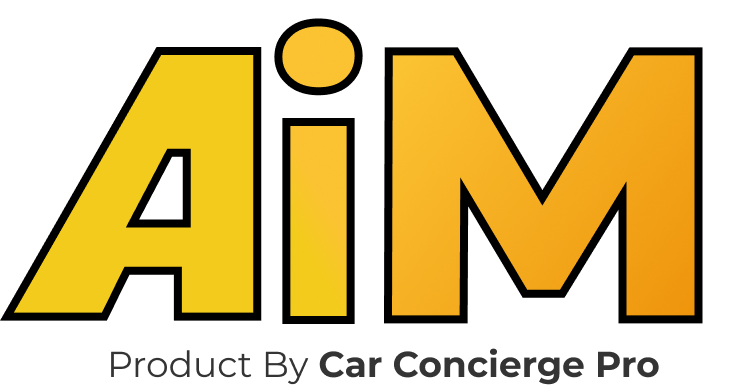Over the last several years, car insurance premiums in Colorado have steadily increased, leaving many drivers feeling the financial pinch. If you’re concerned about the rising rates, you’re not alone—drivers in Colorado have seen significant hikes in their insurance costs. But what exactly is driving these increases, and more importantly, how can you combat them? This blog will provide data-driven insights into the factors pushing Colorado car insurance rates higher, along with actionable tips to lower your premiums. Plus, we’ll introduce you to Car Concierge Pro and our exclusive Auto Insurance Monitoring (AiM) service, which can help you find the best deals available.
Table of Contents
Why Are Colorado Car Insurance Rates Rising?
Several key factors contribute to the rise in car insurance rates in Colorado. Let’s break down the data behind these increases:
1. Population Growth and Increased Traffic
Colorado has experienced rapid population growth in recent years, leading to more cars on the road. Between 2010 and 2020, Colorado’s population grew by 14.8%, from 5.0 million to 5.8 million people, according to the U.S. Census Bureau. This surge in population results in more vehicles and higher traffic density, especially in major metropolitan areas like Denver, Colorado Springs, and Boulder.
With more residents comes a greater need for transportation, and this population boom translates to a significant increase in vehicles on the roads. As traffic volume increases, so does the likelihood of accidents. The Colorado Department of Transportation reported that the number of traffic accidents in Colorado increased by 9.3% from 2019 to 2022. More accidents mean higher claims for insurers, which drives up premiums. On average, Colorado drivers have seen an annual rate increase of about 6% per year over the last decade due to this increased risk.
This increased congestion impacts major highways and suburban and rural areas once less prone to heavy traffic. More cars on the road mean more collisions, which increases the cost of insurance across the board. Insurers must adjust their premiums to account for the higher likelihood of accidents and the resultant claims.
Additionally, as urban areas grow and more people are attracted to living in Colorado, many parts of the state have experienced an increase in construction and roadwork. These temporary construction zones contribute to congestion, and navigating through such areas often increases the risk of accidents. These changes further heighten the demand for car insurance, which, in turn, contributes to rising premiums.
2. Colorado’s Unpredictable Weather
Colorado is well-known for its extreme weather, including severe hailstorms, heavy snowfalls, and icy conditions. According to the Colorado Division of Insurance, the state experienced over 10,000 hail damage claims in 2020 alone, amounting to $1.9 billion in damages. These weather-related incidents directly impact car insurance rates, as insurers factor in the risk of costly damage from storms.
Colorado’s geography also contributes to unpredictable weather, with the state’s proximity to the Rocky Mountains creating conditions that can change suddenly and dramatically. Snowstorms, ice, and heavy rainfalls can cause hazardous driving conditions that lead to accidents, all of which are considered by insurers when setting rates. Hail damage is a significant driver—repairing hail damage can cost thousands of dollars per vehicle. For example, replacing a windshield can cost $300 to $1,000, while repairing hail dents could cost upwards of $3,000 on some vehicles. The financial toll of these incidents is substantial, leading insurance companies to adjust their rates accordingly.
Moreover, Colorado’s mountainous terrain and harsh winter conditions lead to higher accident rates, especially in the winter months. According to the Insurance Information Institute (III), winter weather accounts for 20-25% of all accidents in Colorado. During the winter months, the combination of snow, ice, and poor visibility increases the likelihood of accidents, further raising insurance premiums to cover the associated risks.
With unpredictable weather becoming more common due to climate change, insurers are increasingly concerned about the impact of such extreme conditions. For example, extreme hail storms and heavy snowfalls are expected to occur more frequently in the coming years, leading insurers to factor in more extensive damage costs. As a result, premiums continue to rise in anticipation of these increased weather-related risks.
3. Rising Medical Costs
Medical expenses have been steadily increasing, which directly impacts car insurance premiums. The cost of emergency medical services has been rising significantly over the past decade. In Colorado, the average price of medical treatment for an auto accident rose by 20% from 2015 to 2020, according to the Colorado Division of Insurance. This increase is particularly impactful in Colorado, where Personal Injury Protection (PIP) coverage is required by law. PIP coverage, which covers medical costs for the driver and passengers, has become more expensive as medical care costs continue to climb.
For example, emergency room visits related to car accidents can cost anywhere from $2,000 to $5,000 per visit, depending on the severity of the injury. When multiple drivers and passengers are involved, these medical expenses can quickly skyrocket. As insurers face rising costs for medical claims, they pass these costs onto consumers in the form of higher premiums.
Additionally, the rising cost of healthcare is not limited to emergency services alone. Chronic injuries or long-term medical treatments resulting from auto accidents can significantly increase the financial burden on insurers. The increasing frequency and complexity of medical treatments following accidents make it more expensive for insurance companies to provide coverage, which ultimately impacts premiums for all drivers. As the healthcare industry continues to face rising costs, car insurance companies must adjust their rates to account for the higher medical expenses that come with auto accidents.
4. Higher Vehicle Repair Costs
As vehicles become more technologically advanced, repair costs are rising as well. Newer vehicles often include expensive features such as advanced sensors, cameras, and complex electrical systems. According to the National Association of Insurance Commissioners (NAIC), vehicle repair costs have increased by nearly 30% over the last decade due to these new technologies. For instance, replacing a bumper on a newer model vehicle can cost over $1,500, compared to just $500 for older models.
This rise in repair costs is significant. In fact, the Insurance Information Institute (III) estimates that repairs on newer vehicles can cost up to 50% more than older models. For example, replacing a headlight on a high-end model with advanced sensors could cost $2,000 or more. As the cost of repairing or replacing parts increases, so do the premiums charged by insurance companies to cover those expenses. Insurance companies factor in these higher repair costs when determining premiums, passing on the burden to the consumer.
Not only are repair costs higher for newer cars, but the specialized labor required to work on modern vehicles also contributes to increased costs. Technicians must undergo extensive training to handle the complex systems in new vehicles, and their time is more expensive as a result. Additionally, the cost of parts has increased dramatically as manufacturers use more expensive materials and high-tech components. In some cases, repairs on electric or hybrid vehicles can be even more costly than traditional vehicles due to the unique technology involved.
As a result, insurance companies adjust their premiums to cover these rising repair costs. This can be especially concerning for owners of newer, high-tech vehicles, as the cost of both repairs and insurance continues to climb.
5. Legal and Regulatory Changes
Recent changes in Colorado’s legal environment have also impacted car insurance rates. In 2021, Colorado implemented a new law that made it easier for drivers to file claims under their Personal Injury Protection (PIP) coverage. This change has resulted in higher payouts for insurers, prompting them to raise premiums to cover the increased liability.
Additionally, Colorado has seen a rise in lawsuits related to car accidents. According to the Colorado Judicial Branch, the number of motor vehicle accident lawsuits increased by 14% from 2018 to 2022. With more lawsuits and settlements occurring, insurance companies are adjusting premiums to account for these potential payouts. In cases where injuries are severe or involve multiple parties, the settlements can be significant, and insurers must raise premiums to ensure they can cover these larger liabilities.
The increased frequency of lawsuits can also lead to longer litigation periods, which can increase legal expenses for insurers. When lawsuits take longer to resolve, insurers may face higher defense costs, which are ultimately passed on to policyholders. This legal trend is causing insurance premiums to rise across the board, especially for drivers who are located in regions with higher accident rates and a higher incidence of lawsuits.
How to Beat Rising Car Insurance Costs in Colorado
While it’s clear that several factors are driving up insurance premiums in Colorado, there are steps you can take to minimize the impact on your wallet. Here are some data-driven strategies to help you save:
1. Shop Around for Quotes
Comparing quotes from different insurers is one of the most effective ways to save money. According to a 2023 Consumer Federation of America study, drivers who compared insurance quotes from at least three companies saved an average of 15-20% on their premiums. Shopping around allows you to find the best rates for the coverage you need.
Services like Car Concierge Pro can help you save time by gathering quotes from multiple providers and presenting you with the best options. Our team can help you find the most competitive rates in Colorado, ensuring that you’re not overpaying.
2. Bundle Your Policies
Bundling auto insurance with other policies, such as home, renters, or life insurance, can lead to significant savings. The Insurance Information Institute reports that 30% of policyholders save money by bundling their insurance. Depending on the provider, you could save up to 20% on your car insurance by bundling.
Bundling offers the added benefit of convenience—managing all your policies through a single provider can save you time and hassle. Additionally, insurance companies are often willing to offer more attractive rates to customers who bundle multiple types of coverage. This can significantly reduce your overall insurance costs, especially if you have other policies such as homeowners or renters insurance.
3. Maintain a Clean Driving Record
Maintaining a clean driving record can result in lower premiums. According to the National Highway Traffic Safety Administration (NHTSA), drivers with a clean driving history can save up to 30% on their car insurance premiums compared to those with a history of accidents, traffic violations, or DUIs.
In Colorado, traffic violations such as speeding tickets or DUIs can cause a significant increase in your insurance premiums. Avoiding accidents, following traffic laws, and driving safely will help you maintain a clean driving record, which can be a powerful tool in keeping your premiums lower. Many insurers offer discounts for drivers with a history of safe driving, so make sure to take advantage of these programs.
4. Raise Your Deductible
Raising your deductible is an effective way to lower your premiums. For example, increasing your deductible by $500 could save you 10-15% on your car insurance premium, according to the Insurance Research Council. However, make sure you can afford the higher deductible in the event of a claim.
Higher deductibles mean that you will pay more out-of-pocket when you make a claim, but they can significantly reduce your premium costs. If you’re a safe driver and rarely need to file claims, raising your deductible may be a smart move to save on insurance.
5. Take Advantage of Discounts
Many insurers offer discounts for safe driving, vehicle safety features, and even good student discounts. For example, drivers with anti-theft devices or who complete a defensive driving course could qualify for discounts of 10-20%. Always ask your insurer about available discounts to maximize your savings.
Insurers also offer discounts for drivers who drive fewer miles per year, have a good credit score, or belong to certain professional organizations. Be sure to inquire about all available discounts to see where you can save.
Why Car Concierge Pro Is Your Best Bet
Navigating the car insurance landscape in Colorado can be overwhelming, especially with the state’s unique weather and traffic challenges. That’s where Car Concierge Pro comes in. Our expert team can help you find the best car insurance options in Colorado by:
Customizing Your Search: We analyze your specific needs and recommend policies that fit your situation.
Saving You Time: Instead of spending hours gathering quotes, we do the legwork for you.
Finding You the Best Deals: Our extensive network of providers ensures that you’re getting the most competitive rates available.
Simplify Your Insurance with AiM (Auto Insurance Monitoring)
AiM (Auto Insurance Monitoring) is an exclusive service from Car Concierge Pro that helps you stay on top of the latest insurance rates. AiM continuously compares your current policy to the latest offers on the market, ensuring that you always have access to the best deals.
How AiM Works:
Policy Monitoring: AiM regularly reviews your policy to ensure you’re not overpaying.
Rate Comparisons: AiM compares your rates to new market options and alerts you to better deals.
Real-Time Alerts: If a better rate is found, AiM sends you an immediate alert.
Hassle-Free Updates: Switching policies is made easy and stress-free with AiM.
Benefits of AiM:
Continuous Savings: AiM helps you save money by ensuring you’re always paying the lowest possible rate.
Peace of Mind: Rest easy knowing your insurance is always optimized for savings.
Convenience: AiM eliminates the need to manually shop for rates, saving you time and effort.
Take Control of Your Car Insurance Costs Today
Rising car insurance rates in Colorado may seem daunting, but with the right knowledge and resources, you can find affordable insurance without sacrificing coverage. By understanding the data behind these rate hikes and leveraging services like Car Concierge Pro and AiM, you can stay ahead of rising premiums and get the best rates available.
Ready to take control of your car insurance costs? Contact Car Concierge Pro and AiM today to start saving!



